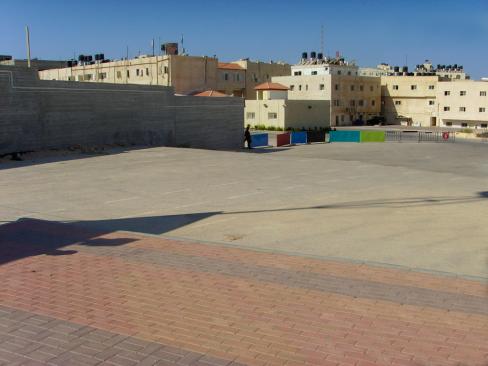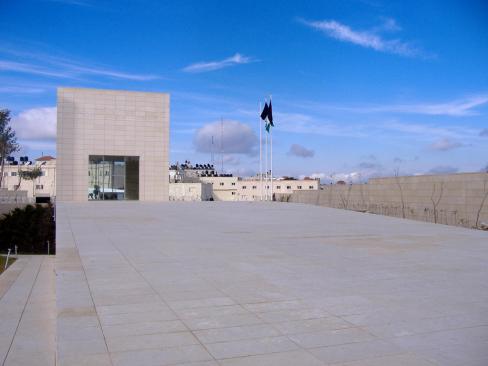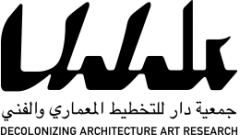The other impulse is to impose political continuity and order under a new system of control. It is thus not surprising that post-colonial governments tended to reuse the infrastructure set up by colonial regimes for their own emergent practical needs of administration. Evacuated infrastructure and built structure was often also seen as the legacy of ‘modernization’ and as an economical and organizational resource. A strong temptation present throughout the histories of decolonization was thus to reuse them in the very same way they were used under colonial regimes. Such repossession tended to reproduce some of the colonial power relations in space: colonial villas were inhabited by new financial elites and palaces by political ones, while the evacuated military and police installations of colonial armies, as well as their prisons, were reused by the governments that replaced them .
Using Israeli residential and military areas would, similarly, establish a sense of continuity rather than of rupture and change. In the context of present day Palestine, reusing the evacuated structures of Israel’s domination in the same way as the occupiers did — the settlements as Palestinian suburbs and the military bases for Palestine security needs – would mean reproducing their inherent alienation and violence: the settlement’s system of fences and surveillance technologies would thus enable their seamless transformation into gated communities for the Palestinian elite.

Al-Muqata (Ramallah)
From Hollow Land, Eyal Weizman (2007):
In the Britisch Mandate of Palestine, during the Arab Revolt of 1936-9, British forces erected a string of military installations near or within Palestinian cities. Most of the British military infrastructure that remained in Israeli territory after the 1948 war later served as police stations and military bases. Some of these bases, built within Palestinian areas, were perfectly placed to continue the tactical task of population control for which they were originally built.
One such, Al-Muqata in Ramallah, was originally constructed by the British as a police headquarters, then used as a base and prison in the Jordanian Army between 1948 and 1967, and in the same capacity by the IDF after 1967. In 1993 it became Arafat’s compound-headquarters until its almost complete destruction by the Israeli military in spring 2002.

Al-Muqata – October 2007. Source: Wikipedia


Al Muqata – Arafat’s mausoleum – January 2008. Source: Wikipedia



Eyal Weizman:
This is the question of history; there is always constant recycling of cultures – buildings and languages. It is not just the reorganization of the space. It is the idea of inhabiting the house of your enemy. You negotiate this transformation differently. This could be the break in ideology, in the radical order of things. You inhabit the house of someone who wanted to displace you, who wanted you dead. Returning back to your land, but even though it is your land you are foreign in it because is has been colonized. You go back to your place, but the space is not the same and you are not the same.
Sandi Hilal:
Actually a lot of people we have spoken with say that they don’t want to live in a place where someone could knock on the door and say, “This is my house”. Especially for Palestinians because they have already lived this kind of tragedy and they were the victims. If you reverse that, you are becoming the one who does not have the original keys. And somebody else somewhere would have the original keys.
When I go to Jerusalem, to Jaffa, I see Arabic architecture. All the time I see these homes, original Palestinian homes and I belong to this architecture and these places. Why, I wonder, would Israelis accept to have these homes? Why because they are a sign and proof that the homes and land belonged to other people. Thinking about Decolonizing Architecture, I think that using the places in different ways you must internalize it and begin to think of it as belonging to you the moment you start to use it. That is the only explanation I can think of to understand why Israelis chose to live in those homes.
EW:
If we think about processes of Decolonization and this revolutionary moment, there is another category – Victory. Kind of simple and almost obscene, but present. The Algerians won the war and kicked the French out military. As well as when we speak about the Nakba. When you walk into the house, you feel like it is yours because you are the victor. Now, when you given the space as part of a semi-compromising, mushy political process that is not really liberation it is a different feeling.
So the Gaza evacuation, rightly so, was seen as resisting Israeli military pressure. I want to suggest a category of Victory.
SH:
It is a strange category for Palestinians because every time we felt close to victory, the situation becomes worse than it was before. Thinking about having a settlement and an act of victory is difficult for me. It is easier for me to imagine finally having more openness.
EW:
It is a completely non-contemporary category, maybe we should destroy it.
SH:
It reminds me of this old man in a refugee camp. We were speaking about his land, by chance. And he said, “Let me tell you story”. He is very old and had this very nice, traditional voice,
“Let me tell you a story. When the Nakba happened I was 15 years old. Two Jewish people were our neighbors and they wanted to buy our land. My father was shocked, why would he sell his land? They tried to convince my father to take the money because if the Palestinians lose and we kick you out at least you would have sold your land. And if you win than you will still have your land, you win both ways. At that moment, my father kicked them out.”
Selling the land would have been accepting the loss. You would have lost both ways. It is about your land and having the right of your land. In that moment, this man refused to sell his rights. It is a matter of justice and rights. This is what it is all about, not about victory.
